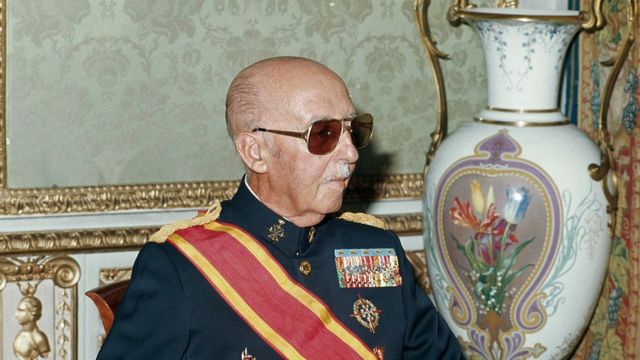General Francisco Franco, a prominent Spanish military leader, played a pivotal role in shaping Spain’s history until his death in 1975. Born in 1892, Franco emerged as a key figure during the Spanish Civil War (1936-1939). Leading the Nationalist forces against the Republicans, he successfully established a fascist dictatorship that endured for nearly four decades.
Franco’s regime was marked by authoritarianism, censorship, and political repression. He consolidated power by suppressing opposition, dismantling democratic institutions, and promoting a strong nationalist ideology. The Francoist era saw severe economic hardship, isolation from the international community, and a conservative social agenda. The regime aligned itself with Nazi Germany and Fascist Italy during World War II, but Franco managed to maintain a delicate balance, avoiding direct involvement in the conflict.
Following World War II, Spain faced diplomatic isolation, but Franco’s regime gradually evolved. In the 1950s, the country experienced economic growth and increasing ties with the Western powers. The 1960s witnessed a modest liberalization, known as the “Spanish Miracle,” which brought economic reforms and improved living standards.
Despite external changes, Franco’s authoritarian grip on Spain remained firm. His vision for the nation involved a strong central government, strict social conservatism, and the suppression of regional autonomy. Catalonia and the Basque Country, in particular, faced cultural repression and restrictions on their languages.
Franco’s death on November 20, 1975, marked the end of an era. The transition to democracy began with King Juan Carlos I assuming the throne. Spain embarked on a path of political reform, leading to the establishment of a constitutional monarchy. The 1978 Constitution guaranteed democratic freedoms and granted autonomy to Spain’s regions, addressing some of the longstanding grievances.
While Franco’s legacy endured in the initial years of the transition, subsequent generations sought to distance themselves from the dictatorship. Historical memory laws were enacted to condemn Francoist symbols and narratives. Efforts were made to recognize the victims of the Civil War, and the Valley of the Fallen, a controversial monument built under Franco’s orders, became a symbol of reconciliation.
In conclusion, General Franco’s rule until his death in 1975 left an indelible mark on Spain’s history. The subsequent transition to democracy and the efforts to confront the legacy of the Francoist era have shaped modern Spain, fostering a commitment to democratic values and human rights.
newshub



Recent Comments